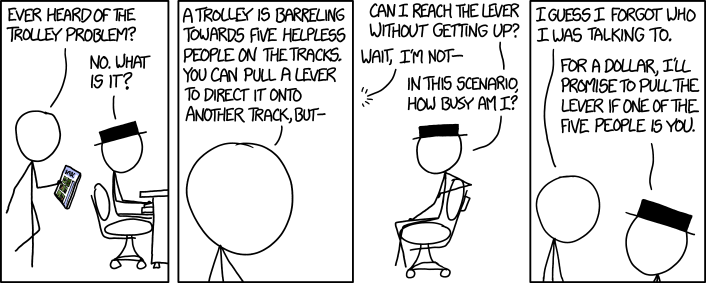Man dies while driven by Tesla Autopilot
Submitted by brad on Thu, 2016-06-30 16:00A Tesla blog post describes the first fatality involving a self drive system. A Tesla was driving on autopilot down a divided highway. A truck made a left turn and crossed the Tesla's lanes. A white truck body against a bright sky is not something the MobilEye camera system in the Tesla perceives well, and it is not designed for cross traffic.




 What does it look like?
What does it look like?




 People with some level of identity (an address, a job) have ways to be accountable. If the damage rises to the level where refusing to fix it is a crime at some level, fear of the justice system might work, but it's unlikely the police are going to knock on somebody's door for throwing up in a car.
People with some level of identity (an address, a job) have ways to be accountable. If the damage rises to the level where refusing to fix it is a crime at some level, fear of the justice system might work, but it's unlikely the police are going to knock on somebody's door for throwing up in a car.
 These networks are having their effect on robocar development. They are allowing
significant progress in the use of vision systems for robotics and driving, making
those progress much faster than expected. 2 years ago, I declared that the time when
vision systems would be good enough to build a safe robocar without lidar was still
fairly far away. That day has not yet arrived, but it is definitely closer, and it's
much harder to say it won't be soon. At the same time, LIDAR and other sensors are
improving and dropping in price. Quanergy (to whom I am an advisor) plans to ship $250
8-line LIDARS this year, and $100 high resolution LIDARS in the next couple of years.
These networks are having their effect on robocar development. They are allowing
significant progress in the use of vision systems for robotics and driving, making
those progress much faster than expected. 2 years ago, I declared that the time when
vision systems would be good enough to build a safe robocar without lidar was still
fairly far away. That day has not yet arrived, but it is definitely closer, and it's
much harder to say it won't be soon. At the same time, LIDAR and other sensors are
improving and dropping in price. Quanergy (to whom I am an advisor) plans to ship $250
8-line LIDARS this year, and $100 high resolution LIDARS in the next couple of years.